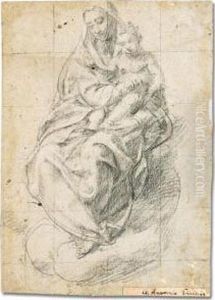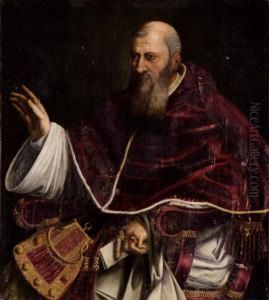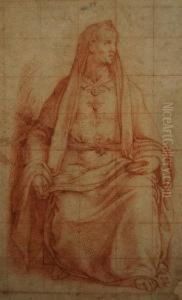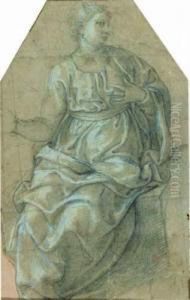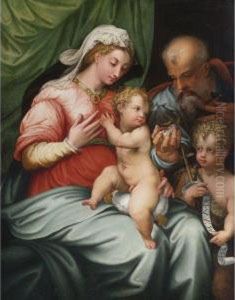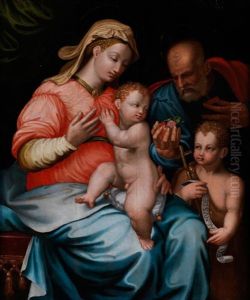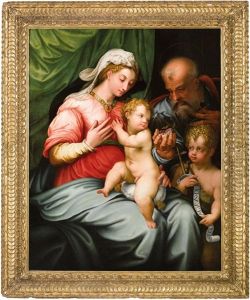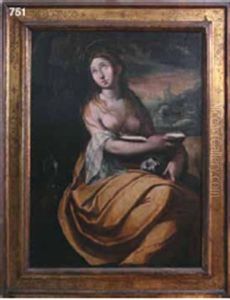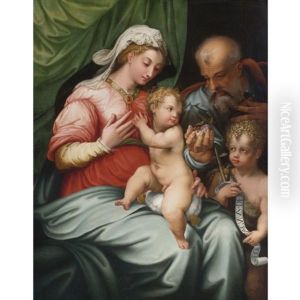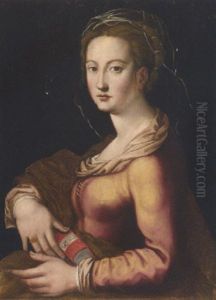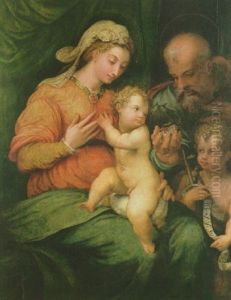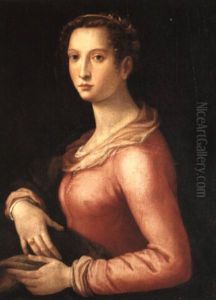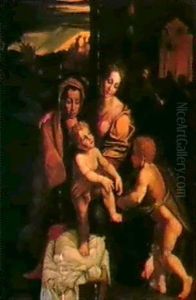Girolamo Sicciolante Da Sermoneta Paintings
Girolamo Sicciolante da Sermoneta was an Italian painter of the Renaissance period, born in 1521 in Sermoneta, a small town in the Lazio region of Italy. His work is often associated with the Mannerist style, characterized by artificiality, grace, and elegance, diverging from the more naturalistic approaches of his predecessors. Sicciolante's artistic journey began under the guidance of his father, who was also an artist, providing him with a foundational education in the arts. Early in his career, he moved to Rome, which was then the epicenter of Renaissance art and culture, to further his studies and work among the leading artists of his time.
In Rome, Sicciolante quickly assimilated into the vibrant artistic community, honing his skills and developing a distinctive style that caught the attention of prominent patrons. He was profoundly influenced by the works of Raphael and Michelangelo, as well as by his contemporaries, such as Polidoro da Caravaggio. Sicciolante's paintings are known for their meticulous attention to detail, vibrant color palette, and the emotional depth of the figures they depict. He excelled in both religious and secular subjects, creating masterpieces that were sought after by the Church and by wealthy private patrons alike.
Throughout his career, Sicciolante received numerous commissions for frescoes and altarpieces in Roman churches and chapels, including works in Santa Maria della Pace and San Giovanni dei Fiorentini. His ability to blend the spiritual with the human made his religious compositions particularly poignant and appealing to the devout and art connoisseurs alike. Despite the high demand for his work in Rome, Sicciolante maintained strong ties to his hometown, contributing to the artistic heritage of Sermoneta as well.
Girolamo Sicciolante da Sermoneta's legacy is that of a skilled painter who successfully navigated the transition between the High Renaissance and Mannerism, leaving behind a body of work that continues to be appreciated for its beauty and emotional resonance. He died in 1580, but his paintings remain a testament to his artistic vision and the vibrant cultural era in which he lived.
